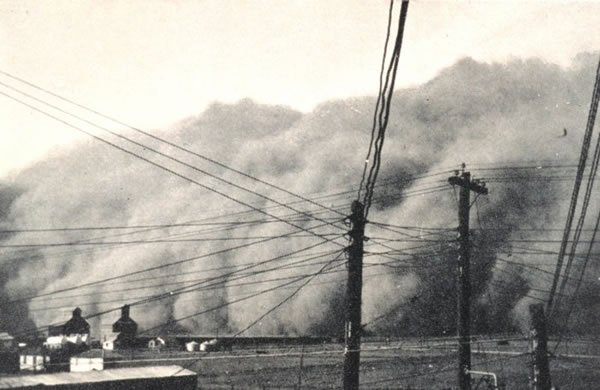Dust storm approaching Spearman, Texas in 1935 A dust storm, sometimes called a haboob, is a powerful storm powered by windy conditions from dying thunderstorms passing over dry, arid, or drought-stricken landscapes. In a dust storm, dust particles are lifted high in the air and undergo a process called saltation, where millions of dust particles bounce off of each other, creating electrical energy, which further powers the storm. These dust storms can form towering walls of sweeping dust hundreds of feet high that temporarily cripple air and ground travel, and that can cause breathing problems for many. Scientists believe that violent dust storms are becoming more common, likely due to climate change. Look at this Dust Storm (haboob) through downtown Phoenix, AZ in 2011
The Dust Bowl EraThe Dust Bowl was a period of American history during the 1930s where dry conditions gave rise to immense dust storms, which crippled agriculture in the Great Plains. Poor farming practices, combined with epic drought resulted in "black blizzards" as the wind swept away soil, forming great black clouds that darkened the sky in the middle of the day. Such black blizzards could carry soil all the way to the east coast cities of Washington and New York. Many farmers in Texas, Oklahoma, and Kansas were forced to abandon their farms and search for work in California. One particularly bad "black blizzard" occurred on April 14, 1935, in Oklahoma and Texas (see picture above). In what is considered perhaps the worst dust storm in American history, scientists estimated that over 300 million tons of topsoil were swept away into the prairie air. |
